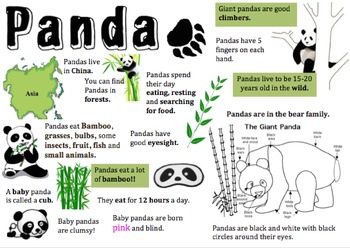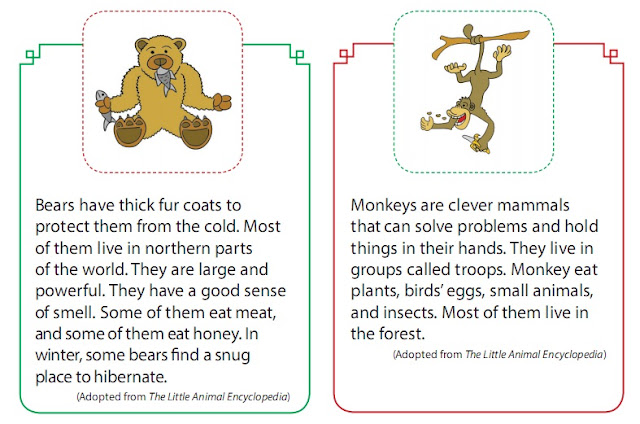
Pandas spend half of their time per day to eat. Being able to eat up to 30 kg of bamboo a day, pandas use their powerful jaws to crush bamboo making it easier to digest. Panda is known to consume more than 30 different species of bamboo plants. The food of panda is almost entirely of bamboo found in the surrounding woods.

Some children of pandas can stay with theie parents for several years until their mother is again pregnant, and they leave to establish their own territory. Cubs are weaned when they are about a year old but did not leave their mother until they are 18 months old. Even if a female pandas give birth to two babies, she could only take care of one of her babies riding on her back until the age of 6 months and then the baby panda goes to follow her afterwards. Baby pandas are also vulnerable, because they are generally blind, hairless, and could only crawl when their age is three months. Baby panda is very small when it is delivered by measuring only 15cm and weighing only 100g. After a gestation period that lasts for about five months, the female panda gives birth to one or two cubs at the base of hollow trees or caves. Although pandas spend time during the day to eat and sleep, they are also known as a good tree climber and can even swim well when needed. Panda spends between 12 and 15 hours a day to chew bamboo which they do by sitting with their front legs to hold the food. In the overlap region is usually the male and female pandas meet for mating. Giant male panda has an area two times larger than the area of the female pandas. Pandas are solitary animals which occupies an area characterized by secretions from scent glands and scratch marks on trees. However, the loss of habitat to deforestation is the biggest threat to pandas today because they rely almost entirely on bamboo for survival. It is estimated that the unique colors of panda fur can help them to blend into the misty forests when they search for food.

Upland forest is cold, cloudy and humid and generally experience high levels of rainfall.

Panda populations are still found in six different mountains in central and western China, where they inhabit coniferous forests with dense bamboo forest at an altitude of between 5,000 and 13,000 feet. Historically, the panda is found throughout the lowlands of the Yangtze River basin, but the increase in human activity in the area has forced the panda to high mountain areas. Panda also has a huge jaw with the jaw muscles and molars strong flat that allows the panda to destroy the bamboo stems and to extract the leaves easily as the nutrients contained therein.

Thus, on a variety of physical adaptations to help consume bamboo including the extension of their wrist bone that acts a bit like a thumb that allows the panda to hold on to a bamboo rod. Panda has thick creamy white fur, with large black spots on the legs, shoulders, ears and nose, and the area around their little eyes are typical. Panda bears are like other large species, has a large head, a short tail and a long snout with a large nose, which makes them to have a very good sense of smelling.


 0 kommentar(er)
0 kommentar(er)
